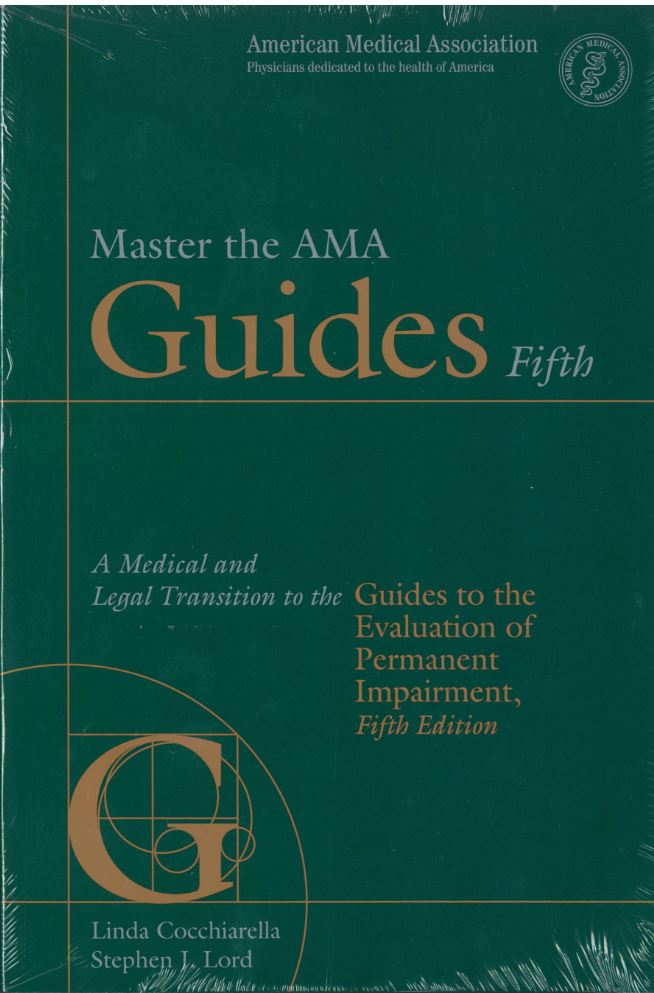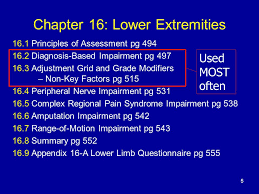LEAD ARTICLE – MAY 2020
When 10 + 10 = 19
Seriously?
Yes, I am serious. It is when the American Medical Association publication entitled “Guides to the Evaluation of Permanent Impairment”, 5th Edition (AMA 5) is used to assess impairments following functional loss.

The Guides deal with the entire body and has separate chapters dealing with the nervous system, the respiratory system, the cardiovascular system and the musculoskeletal system, just to mention four. Of course, the endocrine system, digestive system, ear nose & throat and other related structures are also included.
From an orthopaedic perspective, I deal specifically with Chapters 16, 17, 18 and sometimes Chapters 8 and 13. Chapters 16 and 17 deal with upper and lower extremity anomalies, whilst Chapter 18 refers to pain. Chapter 8 is used for assessment of scarring and other cosmetic deformities whilst Chapter 13 is useful for cerebral and spinal cord malfunctions.

Every Chapter contains text and tables. The tables can provide guides to the examiner and often include useful anatomical drawings. Importantly, the tables also assign a percentage impairment of whole person function to a particular loss. That loss may be in the form of a range of motion, sensation, circulation or even part or all of a limb.
For example, an individual unfortunate enough to lose a lower limb through the mid-thigh exhibits a loss of 36% of the whole person. Somebody who loses a thumb is said to have lost 22% of the whole person.
Let’s assume that we do have an individual who has sustained multiple injuries in an exceedingly serious accident. He exhibits the following losses:
• A left sided through-thigh above knee amputation – 36% of whole person function loss.
• An amputation of the right thumb – 22% of whole person function loss.
• A serious injury to the right hip resulting in the performance of a right total hip replacement which only performed to a fair capacity (not good or excellent) – 20% of whole person function loss.
• A compression fracture in the vertebral column resulting in a lumbosacral fusion with ongoing nerve root or radicular symptomatology. This lumbar spinal malady placed him in Diagnosis Related Estimate Category 5 – 25% of whole person function loss.
If we add the 36% to the 22%, to the 20% and the 25%, we amass a total loss of 103% of the whole person. That is to say, the loss is greater than the whole man! Clearly, that is not possible.

If we took this extreme even further, additional losses could be quantified for respiratory, cerebral, haemopoietic and even genitourinary losses.
Since it is not possible to lose more than 100% of the whole person, so-called “Combined Values Tables” form part of the AMA 5 Guides. These tables are always found at the end of the tome and easy cross-referencing allows the examiner to assess the final permanent impairment. The rule of thumb (if you’ll excuse the pun) is that the highest loss is combined with the next highest loss to yield a figure. That figure is then combined with the third highest loss to yield the next figure. That next figure is then combined with the fourth highest loss.
In this example, the 36% loss referable to the above-knee amputation is combined with the 25% whole person impairment related to the lumbar spinal injury. That yields a loss of 52% of whole person function.
That 52% is then combined with the 22% relating to the thumb amputation to yield a loss of 63% of whole person function.
Finally, the loss of 63% of whole person function is combined with the 20% impairment as a result of the poorly performing total hip replacement to yield a final impairment of 70% of whole person function.
Our hypothetical individual therefore has a total impairment of 70% of whole person function and not 103% of whole person function if all of the losses were simply added rather than combined.

I genuinely hope that you find this explanation useful. Not infrequently, I received calls from Solicitors who question my arithmetic. The questions are based upon the misunderstanding that all of these losses are simply added rather than combined.
There is another useful rule and that relates to a threshold of 15% of whole person function. Once that threshold of 15% of whole person function is reached, losses are combined rather than added. Up until that threshold, the losses are added.
As with all exceptions, there are some further exceptions. When we are adding only minor additional losses to the total, there is no difference between adding and combining. For example, if a Claimant already had a loss of 49% of whole person function and there was a further 1% of whole person function loss to be added because of scarring, a total loss of 50% of whole person function would be quantified using Combined Values Tables. You can see that the additional 1% could simply have been added. Conversely, if an individual had lost 59% of whole person function and there was a further 1% loss of whole person function to be added, the Combined Values Tables would still yield a total loss of 59% of whole person function. This cross-over is at the 50% whole person impairment level.
Rather than remembering these rules of thumb, simply consult the Combined Values Tables at the back of the AMA 5 Guides.
